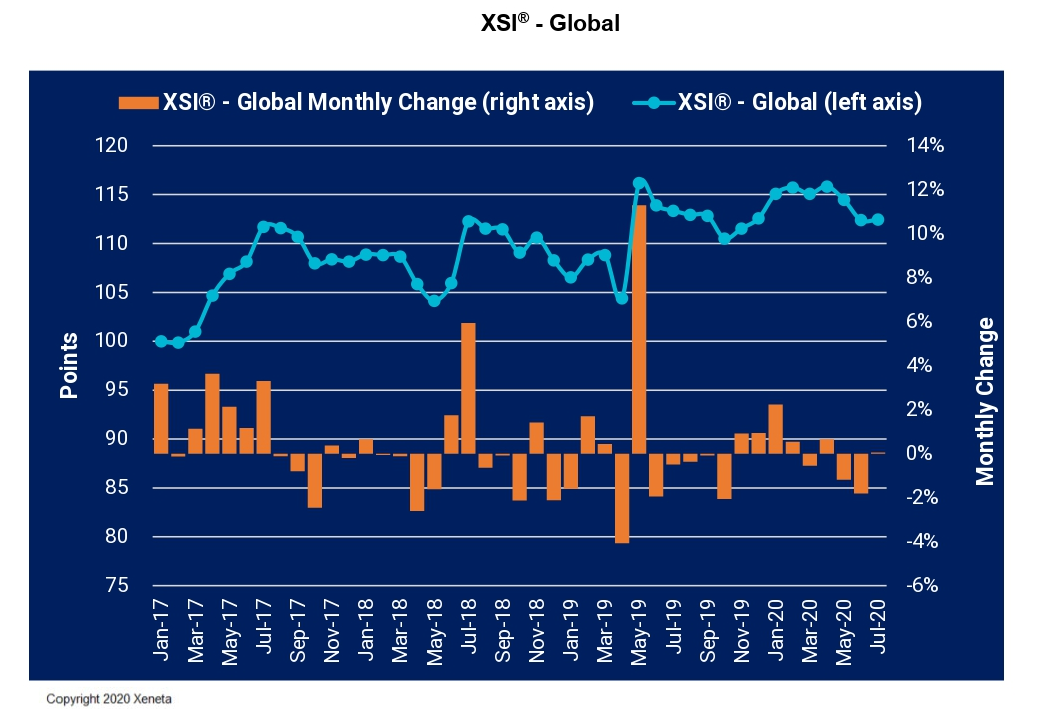Shipping lines perform ‘delicate balancing act’ to hold long-term freight rates steady: Xeneta
July 30, 2020: According to the latest XSI Public Indices report from Oslo-based Xeneta, the shipping lines are safeguarding its vital long-term ocean freight rates with a ‘delicate balancing act’ on supply and demand.

July 30, 2020: According to the latest XSI Public Indices report from Oslo-based Xeneta, the shipping lines are safeguarding its vital long-term ocean freight rates with a ‘delicate balancing act’ on supply and demand.
After two months of slight rate declines, although nowhere near as dramatic as industry observers had feared given the pandemic’s severity, the index crept up 0.1 present in July. It is now just 0.1 present down through 2020 and 0.8 present down year-on-year.
Patrik Berglund, CEO, Xeneta, attributed the relatively minor movements to the proactivity of owners, as they continue to perform a “delicate balancing act” with supply and demand.
“The carriers have been working flat out on strategy and that has maintained a relatively solid rates course in this most trying of times. However, they can’t control external factors and key indicators are undoubtedly a cause for concern.”
Uncertain future
For example, the virus continues to ravage the US and, given the scale of unemployment, demand will remain subdued, creating an impetus to withdraw capacity. Meanwhile, consumer spending has fallen by 1.8 present in China (against forecasted growth of 0.5 present) and that suggests any recovery may take time. However, it’s also important to note that China reported impressive second-quarter GDP growth of 3.2 present year-on-year, beating market expectations and reversing the decline of 6.8 present in Q1.
So, it’s a highly complex picture, and that creates a real challenge for both carriers to effectively manage rates and shippers to know what they should be paying to gain real value for cargoes.
Contracted rates
Berglund added,“We’ve seen contracted rates holding comparatively steady while spot rates have actually been rising from April and through May and June. Given the short- and mid-term macro-economic situation that’s taken many by surprise. The key has been carriers conducting a delicate balancing act to remove tonnage and adjust routes in accordance with demand. However, it’s difficult to maintain that for the long-term and, let’s face it, the virus is not going anywhere fast – so what’s the next step?”
Spot rates
“Our latest intelligence shows that spot rates have finally begun to slide on key Far East-North Europe and Far East - US West Coast trades, suggesting the recent reinstatement of routes and tonnage is driving down prices. That’s obviously a concern for carriers who face a difficult decision: keep reintroducing tonnage and try and gain market share, yet undermine rates, or withhold services and keep propping them up?” he Berglund.
“So, don’t let the current minor fluctuations overshadow the major decisions that are being taken behind the scenes.”
Regional analysis
The XSI Public Indices’ regional analysis of major trading routes painted a mixed picture for July. After four months of decline, imports on the European XSI increased by 0.2 present (down 2 present year-on-year), whereas the export benchmark registered its steepest fall since October with a decline of 2 present. That said, it remains 3.4 present up year-on-year. Developments in the Far East were negative, with a significant 4.5 present fall in import rates and a 1 present drop in the export figure. Year-on-year the benchmarks are up 1.6 present and down 1.3 present respectively.
US figures were varied for the month of July, with imports declining marginally by 0.1 present (0.4 present down against July 2019) while exports registered a healthy rise of 1.2 present, reversing two months of decline. However, despite the increase, the index remains down 3.3 present year-on-year and has now shed 2.2 present of its value since the end of 2019.




